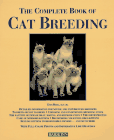| |
||||||
| |
||||||
| |
||||||
| |
||||||
Basic Persian & Exotic Shorthair Cat Care
Here I've provided general information to help you care for your new Persian or Exotic cat or kitten. In addition to the information below, I currently have a report available, Persian & Exotic Shorthair Grooming Secrets. If you're wondering why you can't seem to make your cat look as fluffy as those cats at the show, and no matter what you do your cat looks greasy and clumpy, this report is for you. It explains the exact methods, tips and tricks of grooming your Persian or Exotic Shorthair cat.
The Vet
After you bring your new Persian or Exotic home, you'll need to make an appointment with a veterinarian to have your cat examined. The health guarantee in your cat's purchase agreement probably has a time frame within which you must have this done. Make sure that your vet receives the vaccination record information, provided by your breeder, so that he/she can schedule all needed boosters and additional vaccinations for your Persian or Exotic. What your cat is vaccinated with and when is up to you. You should make well informed decisions about your cat's care. New vaccination protocols are being recommended. Additionally, your vet can council you on an appropriate time for your pet Persian or Exotic to be spayed/neutered.
At Home
A new home can be a stressful situation. It is recommended that your Persian or Exotic kitten be confined to a somewhat limited area, at first, to familiarize him/her with the location of the litter box and to protect him/her from any hazards. Check your home for possible dangers, such as, household chemicals, house plants which may be poisonous, etc. Make sure to baby-proof your home.
Nutrition
Changing your Persian's or Exotic's diet abruptly or overfeeding will cause diarrhea! If you intend to feed your cat something other than what it's accustom to, be sure to change gradually. Begin by mixing approximately one part new food to about five parts current food. Slowly increase the ratio of new food over the next several days until you eventually are feeding nothing but the new food.
I don't recommend feeding grocery store commercial cat foods unless they are of the "professional" type. Many grocery store cat foods are high in ash and may cause your cat dangerous urinary tract blockages later on. These foods are also likely to be loaded with artificial coloring, etc, which may cause your cat to react by vomiting frequently or possibly cause other problems. I recommend that a "professional" cat food be fed such as Iams, Nutro Max, Science Diet, etc. You can find these foods at pet stores, feed stores, and sometimes at your vet's office. Feeding these foods is of course not always fool-proof, since any ingredient in the cat's diet could cause reactions, but in general I feel its your best bet.
Grooming
If your new kitty is a Persian, you now have some work ahead of you. It is recommended that you comb your Persian once a day and wash it well, at least every other week. Persians can become notoriously matted, especially on the belly, under the arm-pits, behind the ears, and under the tail. Pay close to these areas. You will need a metal long tooth comb and a gentle wire slicker brush. Soft bristled "cat brushes" do nothing for the Persian's long coat. Be careful not to brush too hard and hurt your cats delicate skin, but be sure all the hair is combed down to the roots. Frequent grooming will be easier on you and your Persian. Pulling on fur that's infrequently cared for and matted will likely make your cat cranky.
If your Persian does become matted, it is recommend that a groomer shave off the matted areas with an electric grooming clipper. You should not try this yourself unless you're an experienced groomer. It is very easy to accidentally cut the cats thin delicate skin. You may even want your groomer to shave your Persian's body, or maybe just its belly, on a regular basis to minimize your grooming task.
If your kitty is an Exotic, your grooming tasks will be less. No combing is required unless your cat is in a shedding cycle. If it is, combing will help remove the hair. A good combing, followed by a good thorough bathing, followed by another good combing, once your cat is dry, will remove most of the shedding hair.
You will need to give your Persian a bath approximately every other week. Exotics can go longer between baths but remember bathing will remove loose hair and oil. Bathing frequently will help greatly to keep your Persian from matting. Dirt and oil cause the coat to mat quickly and also cause a clumpy look to the coat. I recommend that you use shampoos designed to cut the grease and help make the coat fluffy. I don't use a conditioner unless the coat is dry and damaged. Conditioners tend to weigh the hair down and make your Persian look droopy and greasy. It's probable that your kitten has been bathed several times before you got it, since kittens are always getting messy. The more you bathe and blow dry your Persian or Exotic, the better he/she will behave during these grooming tasks.
As you probably know, cats groom themselves by licking their fur. Persians and Exotics all vary in their interest in personal hygene. Some may lick obsessively and ingest a lot of hair. Others may not lick themselves at all. Hair that is swallowed is expelled either through the feces or by vomiting occasionally. To help this process, give your cat a commercial hairball remedy. Follow the directions on the label. I prefer to tailor the frequency of the maintenance dosage on how much interest the cat takes in licking itself.
Ears
Remember to check and clean inside the ears gently with a cotton swab. If you notice that the insides start to become very dirty with a dark reddish-brown crusty matter, and the cat tries to scratch its ears and shake its head frequently, your cat probably has ear mites. It is important to treat this with a good ear mite medication, as ear mites can lead to infection and ear damage. Be sure to follow the directions from your veterinarian or on the bottle. Other internal ear problems are yeast or other infection. See your vet if the inside of the ears have an odd gunkiness to them and the cat scratches and squirms when you clean them.
Nails
Trim the tips of the nails with a human finger nail trimmer as needed. Watch for the vein inside. You can see it from the side of the nail. You don't want to cut too closely and make the nail bleed. Make sure you supply your cat with a good scratching post that is tall enough that your cat can get a full body stretch up when scratching. You can encourage your cat to use his post by wiping the bottoms of his front paws on the post. This will leave his scent on the post and encourage him to come back to use it.
Eyes
A Persian's and Exotic's eyes tear, and become goopy and crusty. This occurs because of the Persian's and Exotic's short nose. Bacteria causes the discharge to become rust-brown and stain the face. You will need to wipe under and around the eyes with a clean warm wet paper towel or washcloth preferably twice a day. You may also use a commercial eye stain cleaner for the hair below the eye. Follow the directions, do not get this directly in the eye. To see results from using an eye stain remover you must use it religiously, twice a day. You will notice improvement in two weeks.
Because many Persians and Exotics can be prone to cornea (lens of the eye) scratches and ulcers you should pay close attention to their eyes. Should you ever notice the cat favoring an eye, squinting, or rubbing it with its paw, its extremely important to exam the eye immediately. You can examine the cornea in good light by tilting the cat's head so you can look across the surface of the eye. If you see a faint ridge, irregularity, or the cornea is cloudy; or if after you wipe around the eye the cat continues to favor it even though you can't see anything, get to the vet as soon as possible. The sooner its treated properly the better the outcome. Its important to find a vet who's familiar with treating this as some antibiotics can make it worse. Triple antibiotic ointments should be avoided. Under no circumstances should neo/poly/dex or genticin with Durafilm ever be used! Genticin without Durafilm is normally the prefered antibiotic choice; pairing this with a hypertonic eye ointment works well. Other reasons to see the vet are an unusual amount of redness or swelling of the inner eye lids and a thick whitish discharge.
Nose
Persians and Exotics have a snub nose, so often have some of the same characteristics as dogs with the same, such as English Bull dogs, Pekingnese, etc. Its common to hear them snort occasionally which is part of their charm. However, some of these cats may have crimped nostrils (stenotic nares) which cause them to be very noisey breathers or mouth breathers. This is something breeders work to breed away from in their programs, striving for a wide open nostril. In cases of severe crimped nostrils, a veterinarian can surgically correct the problem if necessary.
Although the nose is short it generally has very few problems associated with it. Occasionally, during a virus, a secondary infection of the sinus cavity may occur which requires a strong antibiotic. If not completely cleared, it could reoccur and a sinus flush with antibiotics may be required by your veterinarian.
ANIMAL HEALTH SUPPLIES
The following are my favorite animal health supply companies:

Lambriar
Animal Health Care, LLC has a very large selection of health care,
vaccines, grooming supplies, etc. at great prices.
BEHAVIOR & PROBLEM SOLVING LINKS
Cat Behavior Problems Books Collection at Amazon
Feline house-soiling problems by David Appleby
Cat Faeries - Feliway & Comfort Zone Products for soiling and scratching problems.
BOOK RECOMMENDATIONS & REVIEWS
The Book of The Cat,
Edited by Michael Wright & Sally Walters
This is an excellent book for all cat owners, if you can find a copy.
I understand it is now out of print. It contains lots of good information
on all aspects of cat ownership.
The
Complete Cat Book,
by Richard H. Gebhardt
This book has excellent photographs of show quality cats. In addition
to it's general cat care information, it explains very nicely showing,
breeding and standard characteristics of all cat breeds. It includes a
very nice Persian section.
Feline
Husbandry Diseases and Management in the Multiple Cat Environment
by Neils Pedersen
This book is a must-have if you intend to breed cats. It covers diseases
and management, as the title indicates, as well as breeding, breeding
problems, housing, etc.
The
Cornell Book of Cats : A Comprehensive and Authoritative Medical Reference
for Every Cat and Kitten
by Mordecai Siegal (Editor), James R. Richards (Editor)
This is another must-have for those with multiple cats. A very nice companion
to Feline Husbandry Diseases and Management in the Multiple Cat Environment
listed above.
If you intend to begin breeding and showing Persian cats I recommend
that you subscribe to
The
Cat Fanciers Almanac which is the official magazine of The Cat
Fanciers' Association, and also
The
Persian News, which covers all aspects of breeding and showing
Persian cats.
Please also see other favorite selections to the right and below.
Recommendations:

The Guide to Owning an Exotic Shorthair Cat (The Guide to Owning)
by Karen Commings / Hardcover / 64 pages /
1999

Persian Cats
Hardcover / 1990
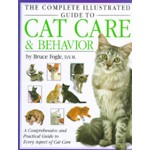
Complete
Illustrated Guide to Cat Care
by Andrew Edney Hardcover / 320 pages / 1999

The
New Encyclopedia
of the Cat
by Bruce Fogle / Hardcover / 272 pages / 2001
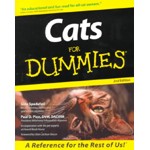
Cats
for Dummies
by Gina Spadafori / Paperback / 384 pages / 2000
New Release 12/2003!

Kittens
for Dummies
by Dusty Rainbolt / Paperback / 336 pages / Dec 2003
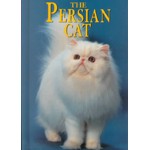
The Persian Cat
by Joanne Mattern / Library Binding / 48 pages / 2001

Cats & Dogs
starring Jeff Goldblum / DVD / PG / 2001
(fun family movie)...
Trivial Note:
The brown tabby
exotic shorthair who's the
sidekick to the white persian in this
cute family movie
is the uncle of
Corsica's No Doubt of Purfurvid
 Complete Kitten Care
Complete Kitten Care
by Amy Shojai / Paperback / 368 pages / 2002
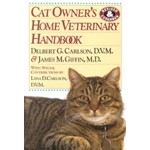 Cat Owner's Home Veterinary Handbook by Delbert G. Carlson / Hardcover / 448 pages / 1995 |
 Natural Health Bible for Dogs & Cats : Your A-Z Guide to Over 200 Conditions, Herbs, Vitamins, and Supplements by Shawn Messonnier / Paperback / 480 pages / 2001 |
 The Cornell Book of Cats : A Comprehensive and Authoritative Medical Reference for Every Cat and Kitten by Mordecai Siegal (Editor), James R. Richards (Editor), Cornell Feline health / 1997 |
|
|
 Breeding Pedigreed Cats by Carolyn M. Vella, John J. McGonagle |
Their are several other excellent references. Please follow these links:
General
Cat Information section of the Cat Fanciers' Web Site
Caring
For Cats section of the Cat Fanciers Association, Inc. Web Site
Cornell
Feline Health Center Web Site
Veterinary
Medicine section of the Cat Fanciers' Web Site
Home / Care of Persian & Exotic Shorthair Cats / Purfurvid Persians
Purfurvid Exotic Shorthairs / Past Pictures / What's Available
Some graphics within this site were created by
the owner of the site.
Use of the copy and these graphics contained here is prohibited.
Contents copyright ©1996-2004 Jeanne Scholz-Snyder. All rights
reserved.
Jeanne works full time as a web developer creating browser based
data-driven web applications.
http://www.purfurvid.com/jeanne_snyder






